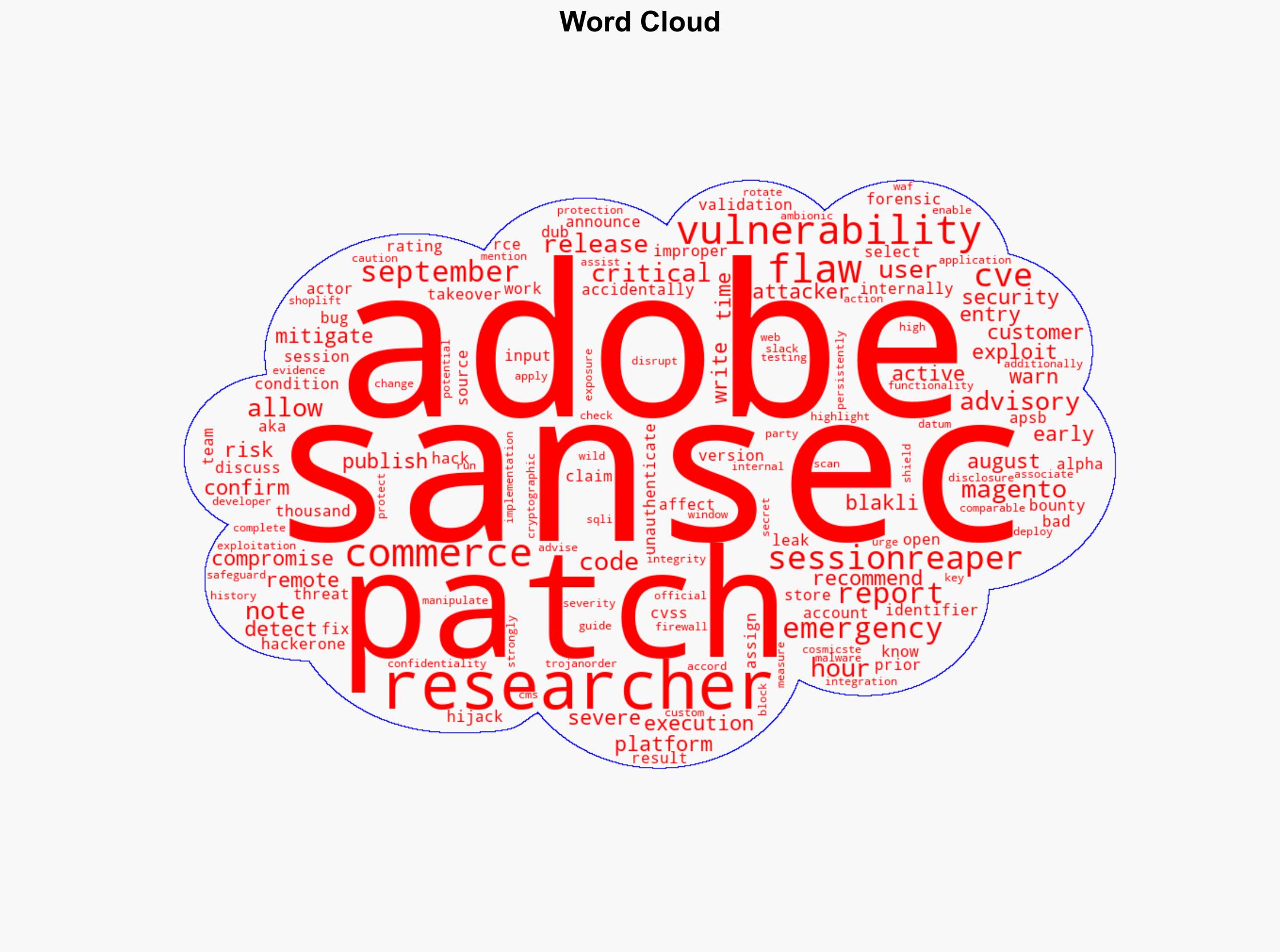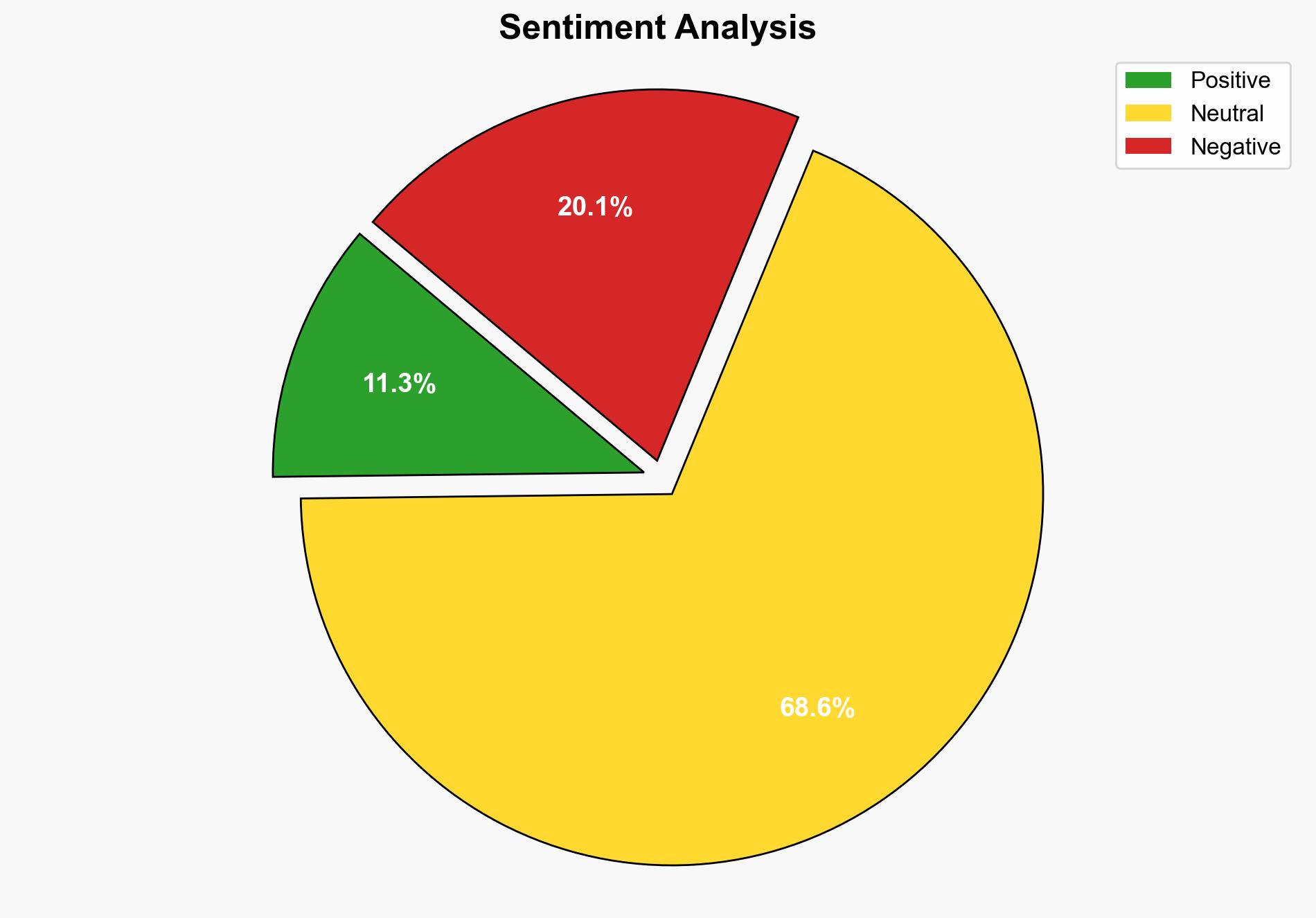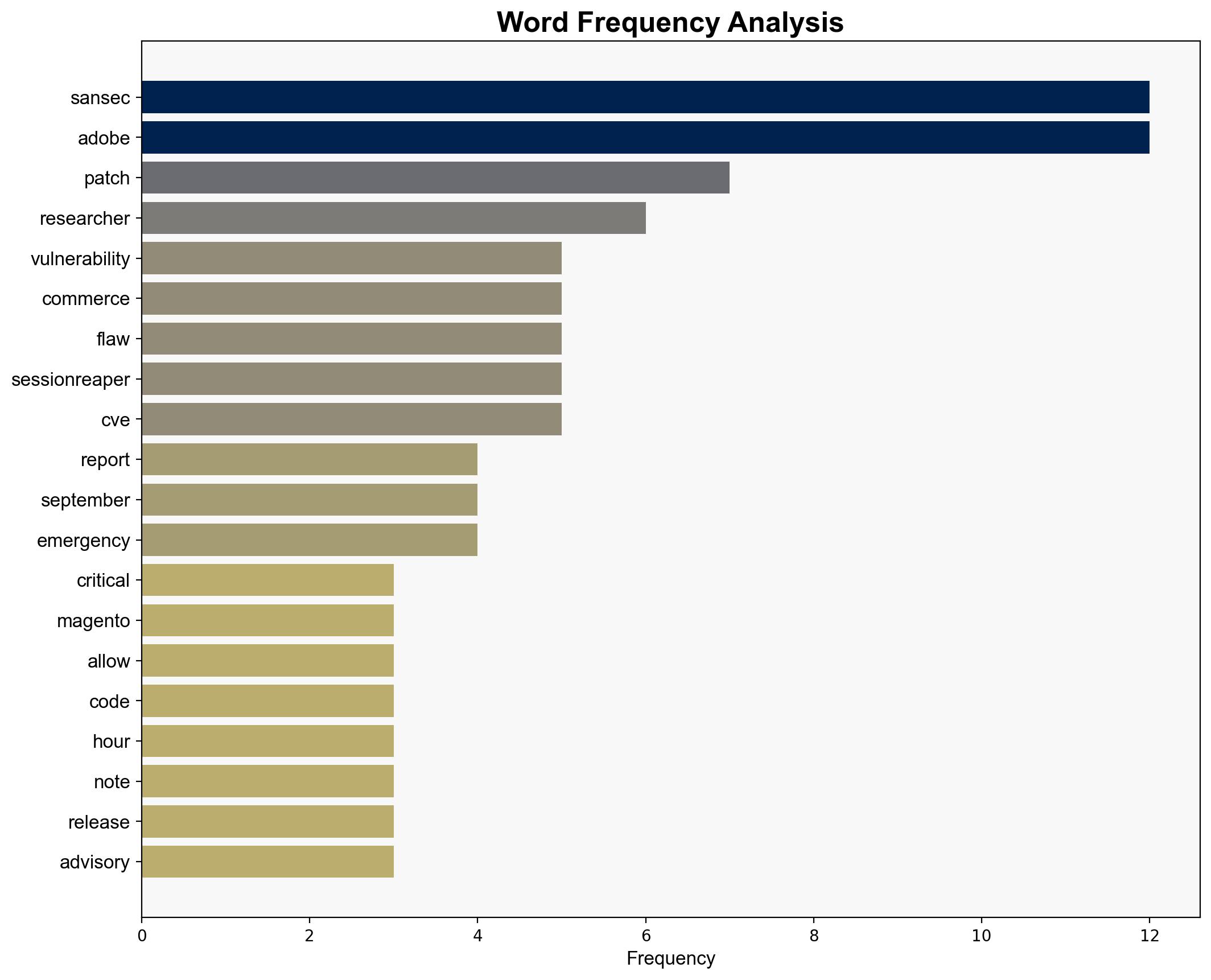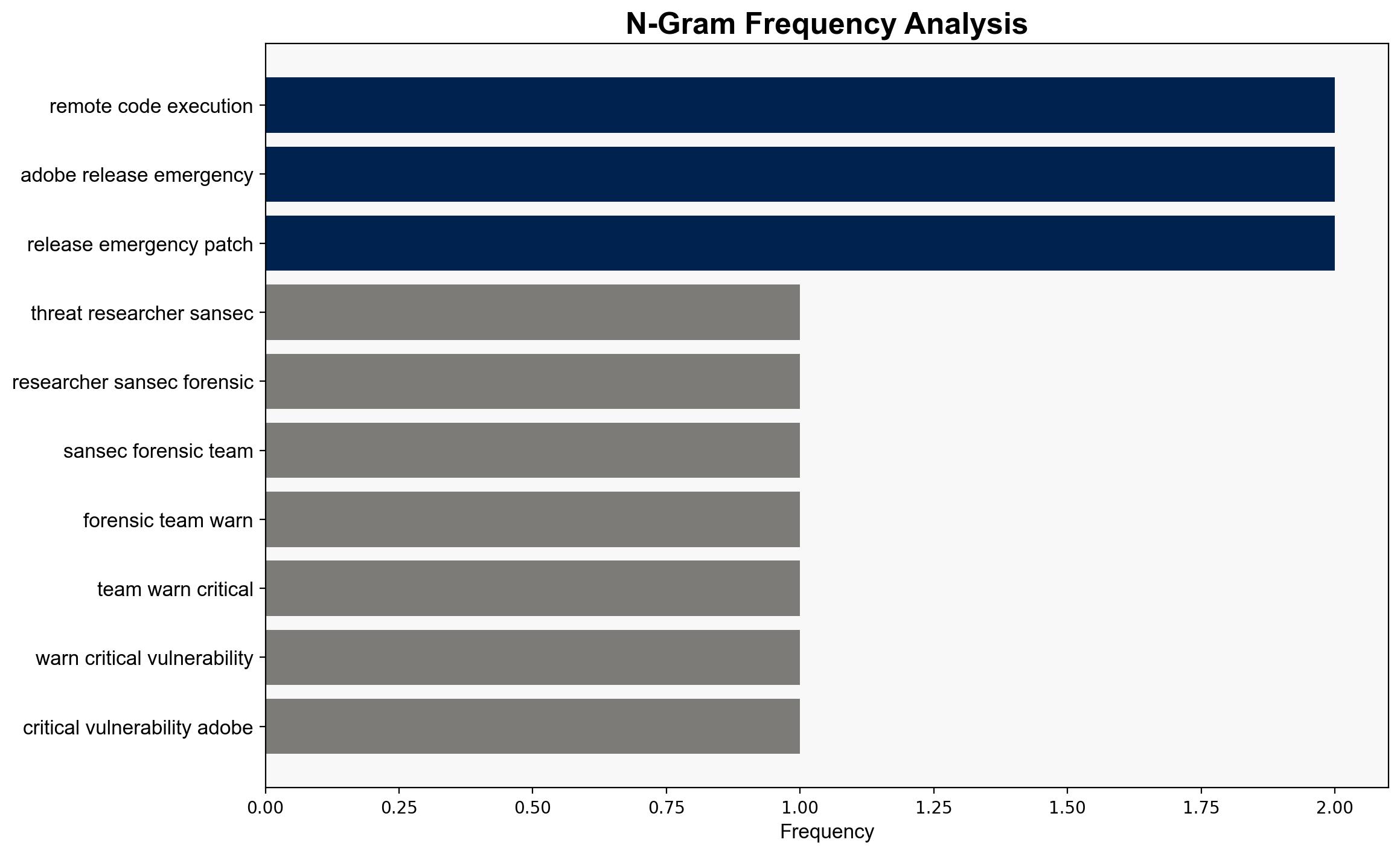Adobe Releases Emergency Patch for Critical Flaw in Commerce and Magento – Infosecurity Magazine
Published on: 2025-09-10
Intelligence Report: Adobe Releases Emergency Patch for Critical Flaw in Commerce and Magento – Infosecurity Magazine
1. BLUF (Bottom Line Up Front)
The most supported hypothesis is that Adobe’s emergency patch release was a necessary response to an actively exploited vulnerability, with a high confidence level. It is recommended that organizations using Adobe Commerce and Magento immediately apply the patch and implement additional security measures, such as enabling web application firewalls and conducting malware scans, to mitigate potential risks.
2. Competing Hypotheses
Hypothesis 1: Adobe’s emergency patch was a preemptive measure to address a critical vulnerability before widespread exploitation occurred. This hypothesis suggests that Adobe acted decisively upon identifying the flaw to prevent potential breaches.
Hypothesis 2: The emergency patch was a reactive measure due to the vulnerability already being exploited in the wild, as indicated by the Sansec report. This hypothesis implies that the flaw was actively used by malicious actors before Adobe’s patch release.
3. Key Assumptions and Red Flags
Assumptions:
– Hypothesis 1 assumes Adobe had early detection capabilities and acted before significant exploitation.
– Hypothesis 2 assumes that exploitation was already occurring, prompting the emergency response.
Red Flags:
– The early leak of the patch and its exploitation by bad actors suggest potential internal security lapses.
– Lack of detailed timeline on when Adobe became aware of the exploitation versus when they released the patch.
4. Implications and Strategic Risks
The exploitation of the SessionReaper vulnerability could lead to significant data breaches, impacting thousands of online stores and their customers. This could result in financial losses, reputational damage, and increased scrutiny on Adobe’s security practices. The incident highlights the need for robust vulnerability management and rapid response strategies in the cybersecurity landscape.
5. Recommendations and Outlook
- Organizations should immediately apply the emergency patch and enable web application firewalls to prevent exploitation.
- Conduct thorough malware scans and rotate cryptographic keys to mitigate any potential compromises.
- In the best-case scenario, rapid patch deployment prevents widespread exploitation. In the worst-case scenario, delayed responses lead to significant breaches. The most likely scenario involves some exploitation before full patch deployment.
6. Key Individuals and Entities
Blakli (security researcher), Sansec forensic team, Adobe, HackerOne.
7. Thematic Tags
cybersecurity, national security threats, vulnerability management, data protection





